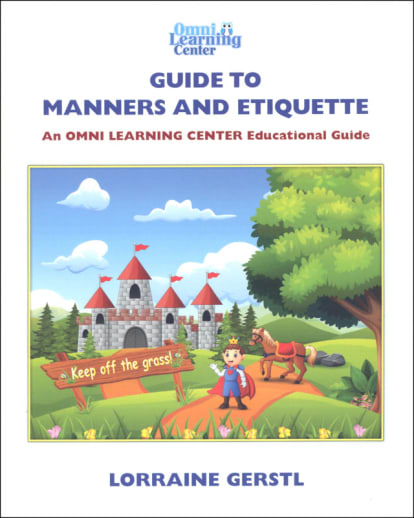If the title doesn't strike you as something you want as a resource in your school, once you peek inside you may change your mind! Tucked inside the paperback cover are 75 pages of well-organized and easy to digest information to aid in teaching. Starting with a brief history of manners and etiquette and progressing through modern day situational topics such as social media etiquette, and gym etiquette the material is solid. Reproducible student worksheets are scattered within. This is an ideal resource to use to help young people develop social skills in a variety of situations. I also appreciate the pages addressing etiquette when interacting with different people groups from around the world.
Guide to Manners and Etiquette
Description
Manners are polite behaviors that reflect an attitude of consideration, kindness and respect for others. They are learned behaviors to be used every day to make a good impression on others and to feel good about yourself. Good manners go beyond opening doors and writing thank you notes. The really polite person is tuned in to other people's feelings and can put herself or himself in another person's shoes. Using good manners encourages others to act in a similar fashion.
Etiquette expresses consideration, respect, and honesty, the three qualities that stand behind all the manners we have. Etiquette is timeless and crosses cultural boundaries, unlike manners, which can change over time and differ around the world. Without proper manners and etiquette, the customs of polite society would soon disappear and we would act more like animals and less like people.
Good manners are a powerful source of self-confidence and help facilitate life's relationships in general. Manners are important for considering the feelings of other people and being the kind of person others will like and respect., "Do unto others as you would have them do unto you," the Golden Rule, exists in every culture on the planet.
Good manners impress people and put them at ease. And people who are impressed and relaxed are more likely to respect you and agree to your requests. Manners make the world a better place. Best of all, good manners don't cost a thing. You can have the very best for free!
| Product Format: | Paperback |
|---|---|
| Grades: | PK-AD |
| Brand: | Pangaea Publishing Group |
| ISBN: | 9781950134359 |
| Length in Inches: | 10 |
| Width in Inches: | 8 |
| Height in Inches: | 0.125 |
| Weight in Pounds: | 0.45 |

